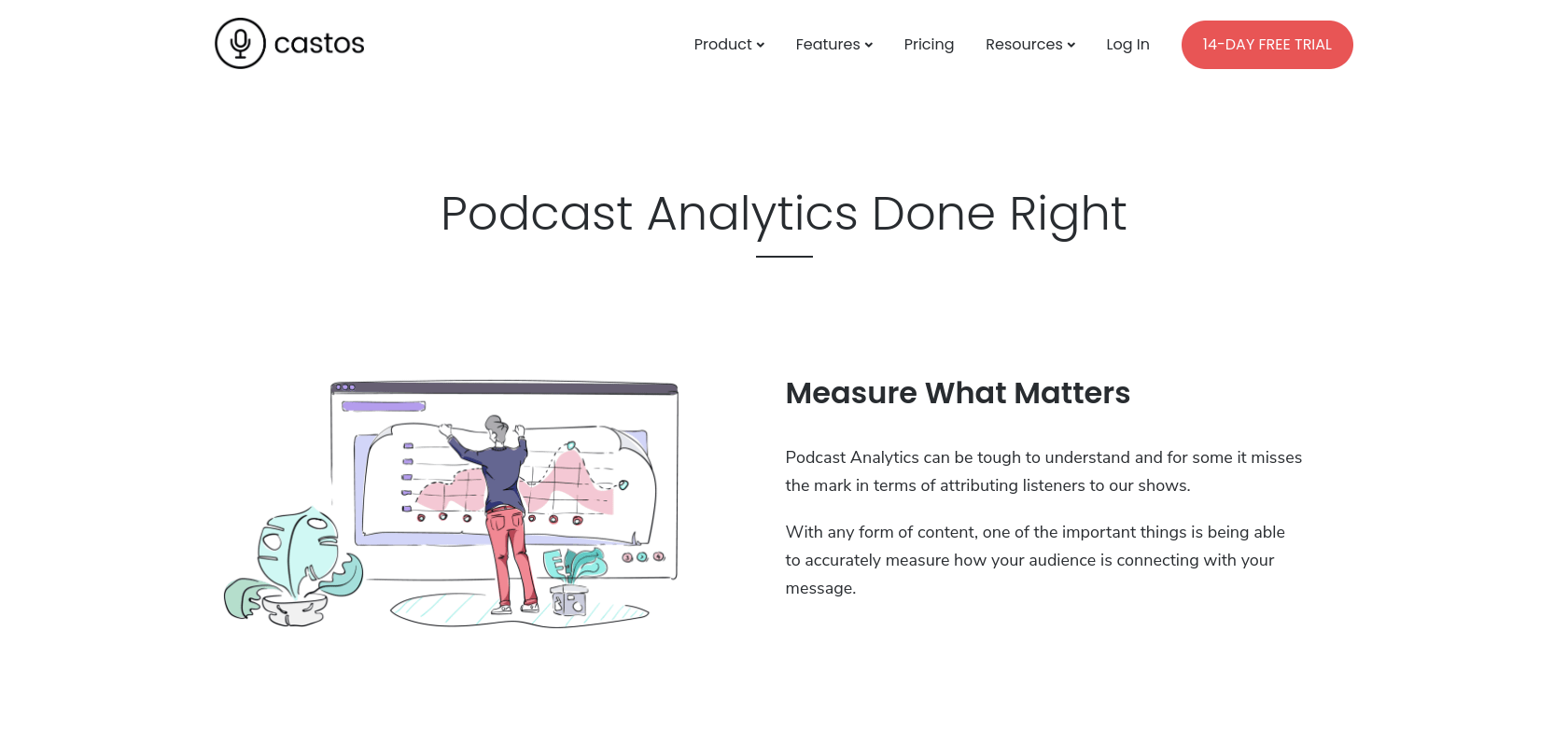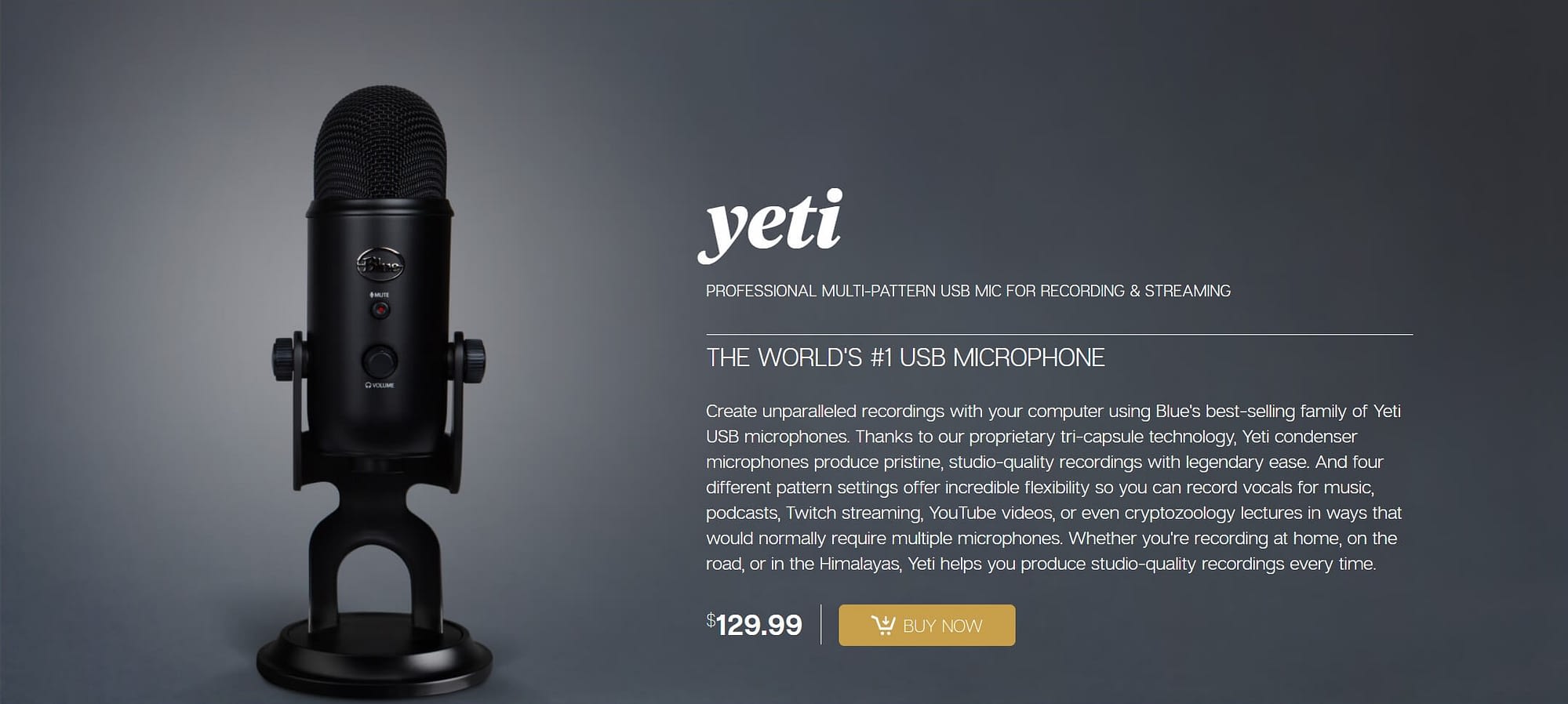You’ve decided to start a podcast, maybe even started planning your episodes. But how are you going to make your podcast stand out from the millions already published? How can you achieve enough podcast growth to actually build an income around it?
In this article, we’ll discuss how building a podcast can benefit your business. Then we’ll provide you with five strategies you can use to grow your podcast.
Let’s dive in!
How podcast growth can benefit your business
Podcasts are a valuable form of content marketing that can supplement your current blog or online presence. They’re great for building authority and brand awareness, and they’re also an effective way to engage with your audience.
Beyond that, podcasts can provide you with an additional source of revenue, thanks to advertising and brand deals. As you grow your podcast and your audience expands, these sponsorships go up in value.
Podcast popularity has been consistently increasing over the last few years. Today, over 70 percent[1] of the U.S. population is aware of what a podcast is. More importantly, in 2019, over 50 percent of people[2] in the US listened to podcasts – a large jump from the 44 percent in the previous year.
Along with those increases comes the potential for strong revenue streams. Advertising earnings from podcasts are expected to hit one billion dollars in 2021[3]. Additionally, 54 percent of consumers[4] say they’re more likely to consider brands they hear about on podcasts.
This opens up plenty of opportunities to promote products, increase affiliate marketing sales, and bring in extra income through branded partnerships. The key to it all is growing your podcast to reach a larger and more engaged audience.
Five key tips to help maximize your podcast growth
Starting a podcast can be a daunting proposition. Between the challenges of learning a new format, finding your niche, and attracting listeners, there’s a lot to consider. However, the following five tips should help you start strong and get on the fast-track to quick podcast growth.
- Find your podcast niche
- Provide consistent value to help grow your podcast
- Host guests on your podcast
- Determine and track your key metrics
- Focus on putting out episodes with high-quality audio
1. Find your podcast niche
While casting a wide net might seem like a smart idea (and it can be, when you’re first starting), focusing on a specific niche and owning it can yield better long-term results. As your niche narrows, your audience will generally get smaller. However, they’ll often also be more dedicated, engaged, and likely to buy. On the other hand, broader niches will attract a larger but less-qualified listener base.
The larger the audience your podcast caters to, the more competition you’ll find. This becomes particularly important if the broader industry your business operates in is extremely crowded, such as marketing or consumer technology.
To help you narrow in on the right target niche, it’s essential to ‘follow the numbers’. You’ll want to keep track of your analytics and use them to drive decisions about future content.
For example, let’s say you’re doing a WordPress podcast and your web-design-related episodes do better than your development-oriented ones. Perhaps most of your listeners are designers. In this case, it might be better to focus on design topics than try to expand to the development-related subjects.
Most platforms that you can upload a podcast to provide at least basic analytics. However, some tools can help make this process significantly easier, such as Transistor and Castos:


Both of these podcast publishing and hosting platforms offer analytics features. They can make it easier to gain useful insights into your audience and find opportunities to improve.
You can also look at shows that platforms such as Apple Podcasts mark as being “related” to yours. This will give you an idea of what other podcasts your target listeners are interested in.
2. Provide consistent value to help grow your podcast
When creating podcast content, your first priority should be to provide value to your listeners. If you’re familiar with content marketing in other formats, such as blogging, this won’t be a new concept.
If you focus on providing valuable content, it will eventually move you toward your business goals, whatever those may be. It’s also important to stop and consider what your target audience wants to hear, otherwise people may not have a reason to listen.
Delivering consistently high-value content starts with having a plan in place – and this plan should begin with thorough research. What kind of topics do your listeners want to hear about? If you’re not sure, all you have to do is ask.
User surveys are a fantastic way to figure out what your audience wants. A tool such as SurveyMonkey can help you easily poll your existing followers for ideas:


You can also look at successful content on your current channels, such as your website, blog, and social networks. Finally, consider checking out what’s working well for your competitors. For example, you can explore various podcast charts to find out who’s succeeding in your target niches and categories.
3. Host guests on your podcast
Inviting guests onto your podcast is an excellent way to attract their audience to your content and, in turn, stimulate podcast growth. The best part is that it’s often a mutually beneficial arrangement: the guest can get as much out of an appearance as you do, which makes for useful leverage when pitching to prospects.
When inviting guests to come on your podcast, it’s important to be strategic. We recommend looking for individuals or brands that fit in with your niche, so the listeners you attract are more likely to stay for future episodes.
Finding guests can seem a bit tough if you’re new to podcasting. You might assume that nobody will be interested in joining you if you don’t have a large audience. However, the whole reason you’re inviting them on an episode is to help each other gain more exposure.
While it may feel like an impossible task, the key is looking for people in your industry – especially those with something to promote. Plus, once you’ve had a few guests, you have some social proof that you can use to entice others who might be hesitant.
4. Determine and track your key metrics
You probably know the old saying: “Knowledge is power.” As with any other social or content marketing strategy, it’s important to analyze the data to determine whether what you’re doing is working or if it’s time to pivot. Strong analytics can help shape your future content to be as effective as possible, and podcasts are no exception.
To make this easier, it helps to determine what constitutes success for your podcast – whether that’s total listeners, sponsorship revenue, or something else. Then you can focus on the appropriate metrics for monitoring your progress.
Key Performance Indicators (KPIs) that you may want to track for your podcast include:
- Subscriptions
- Downloads
- Social shares
- Backlinks
- Advertising revenue
For any of these, it’s important to have access to a high-level overview, as well as the ability to deep-dive into specific areas. There are some powerful podcast-specific analytics platforms on the market that can help you get a leg up.
For example, as you might recall, Transistor and Castos are both feature-packed and easy to use. Either service can help you fuel and stay on top of your podcast growth.
5. Focus on putting out episodes with high-quality audio
Finally, it’s crucial to do everything you can to ensure that your podcasts are of high quality. Listeners want a smooth, impactful, and distraction-free experience. If the audio quality on your episodes is terrible, they probably won’t enjoy listening or be willing to stick around to see if you improve.
While audio equipment can be costly, it doesn’t have to be – you can get solid results with a handful of fairly affordable pieces. Combine these with smart microphone placement and the right room, and you’ll be well on your way.
The first place to start is, naturally, with a reliable microphone. The gold standard for affordable, high-quality mics that you might consider starting with is the Blue Yeti:


You can set it up with a pop filter, or place it slightly off to the side to avoid random bursts of sound. It may take some experimenting with mic placement to find the best audio quality, so don’t be afraid to do a few test recordings until you feel confident.
Speaking of recording, it’s also recommended that you choose your room carefully. You’ll want to minimize echo and harsh sounds, so consider using a carpeted space or placing a rug under your recording area. Wherever you set up, you should also ensure that there’s minimal (if any) background noise.
Do you need podcast equipment? Check out our guide to podcast equipment for every budget.
Lastly, we recommend preparing an outline before you start each episode. That way, if you get lost or off track accidentally, you can quickly get your bearings and avoid awkward pauses. While you can technically edit those elements out post-recording, it’s easier to avoid them altogether.
Conclusion
If you’re struggling to break through to your audience with blogging, video, or social media, you’re not alone. A podcast might be the perfect solution for your brand, providing a useful channel for content and an additional stream of revenue from sponsorship.
In this post, we discussed five tips you can use to maximize your podcast growth:
- Focus on a narrower niche to draw in a more engaged audience.
- Provide consistent value to attract listeners.
- Invite guests to your podcast to help expand your listener base.
- Track your metrics carefully to determine the course for future content.
- Make high-quality audio a priority to ensure a pleasant listening experience.
What tips do you have for growing a podcast? Let us know about it in the comments section below!
[1] https://www.thepodcasthost.com/listening/podcast-industry-stats
[2] https://www.statista.com/statistics/188955/percentage-of-us-adults-who-listen-to-audio-podcasts-since-2006
[3] https://www.iab.com/wp-content/uploads/2019/06/Full-Year-2018-IAB-Podcast-Ad-Rev-Study_6.03.19_vFinal.pdf
[4] https://www.edisonresearch.com/the-podcast-consumer-2019
The post 5 Key Tips to Help Maximize Your Podcast Growth in 2021 appeared first on Revive Social.
